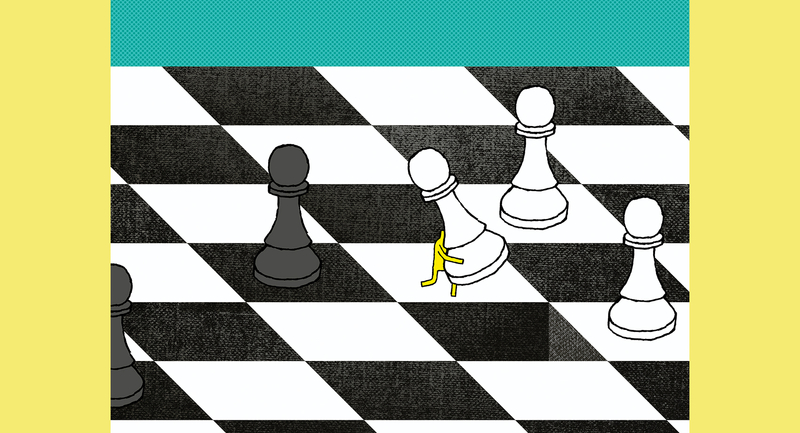PBI Global is way more interactive. It's a group, and we're all working together to achieve one main goal." These were the words of Damian, one of several high school students from Raleigh, North Carolina, who collaborated with students in Suzhou, China, to answer compelling questions about water ecology. For Damian, the experience was transformative because he learned how to communicate, collaborate, and create with peers in another country. Through an investigation of water ecology, his teammates developed cross-cultural understandings of one another and of a complex global issue.
As university researchers, we work with administrators, teachers, and students to facilitate cross-cultural inquiry projects. We use a specific framework for project-based learning called Project-Based Inquiry (PBI) Global. This inquiry framework connects students internationally through interdisciplinary projects. The PBI Global approach consists of five phases: ask a compelling question; gather and analyze sources; creatively synthesize claims and evidences; critically evaluate and revise; and share, publish, and act on the answer to the question.
We encourage students to focus on questions that address grand challenges. The best questions are open-ended, relevant to students' lives, and of social importance. The questions propel students to dig into complex content as they construct answers and create an original digital product.
After testing the quality of two bodies of water (one in Suzhou and one in Raleigh), Damian's teammates observed that pollutants in both bodies of water were generally associated with runoff from construction sites. Their common findings sparked a discussion about urban development. Damian's team decided to investigate the following question: How are water sources affected by urban development, and how can we use sustainable development practices to mitigate water pollution?
When it came to gathering and analyzing sources, the students in Suzhou and Raleigh had to make sense of contradictory information. For example, students in Suzhou found online sources claiming that manufacturing didn't cause a caustic algal bloom in Taihu Lake, a major local water source. However, when students tested water from the lake, the pollutants appeared to be from industrial waste. These contradictions led students to argue that certain information sources were more credible than others.
Students used various digital tools, including WeChat and Skype, to discuss and plan together. Each week, teams met synchronously over Skype to hear project updates, map out goals for the coming week, and assign responsibilities. Students also used Quip, Wikispaces, Google, and Baidu for gathering, analyzing, synthesizing, and sharing research, as well as Prezi and Animoto for creating the culminating digital products. For most students, at least one of these tools was unfamiliar, and all students benefitted from pre-teaching on how the tools could be used for academic purposes. Teachers also used the tools to check in with groups and track progress.
Members of Damian's group broke into smaller pairings to research their claims. As the students' claims, evidence, and reasoning took shape, the group began writing and revising a script for its digital video project.
Students learned not only how to conduct research, but also how to communicate with their partners from another country. For example, the Raleigh members knew that the Suzhou students were non-native English speakers. To make sure all group members' voices were valued regardless of language proficiency, Damian and his classmates learned some basic Mandarin phrases and practiced those with their Suzhou partners.
The capstone of every PBI Global project is a showcase during which the students present their digital products. The showcases are simulcast at partner schools so student groups can present together in real time. For this particular PBI Global presentation, students, teachers, parents, and community members were invited to learn about local and global water quality issues. Each team introduced its question, presented a video, and fielded questions from audiences in both countries. To keep the conversation going, students shared their videos online. (Videos can be viewed here.)
The students' communication continued after the showcase. Spurred to learn more about one another, the students created an international club that meets online monthly to discuss cultural traditions, customs, values, and norms.
Why do teachers go the extra mile to engage their students in cross-cultural collaborations? From our experience, one reason is that teachers witness firsthand how these collaborations transform their students' perspectives on learning. Andrea Gambino, Damian's history teacher, heard her students speak enthusiastically about how they connected with their Chinese counterparts. "This is basically a teacher's dream, to see your students be on fire for learning," she said.
This article is part of a Special Section on Connected Classrooms in the December 2016/January 2017 issue of Educational Leadership.
These three projects offer students authentic opportunities to develop global competencies.
A Learning Journey Around the World by Liz Dawes Duraisingh
Cross-Cultural Inquiry in Science by Hiller A. Spires, Marie Himes, and Lisa Wang
From Pen Pals to Global Citizens by Jean Kirshner, Eli Tzib, Zilpa Tzib, and Sara Fry









